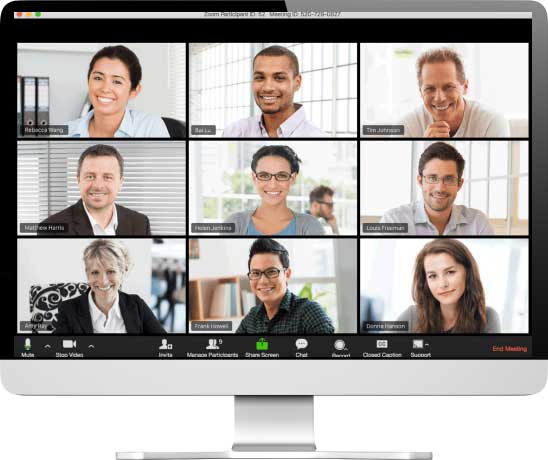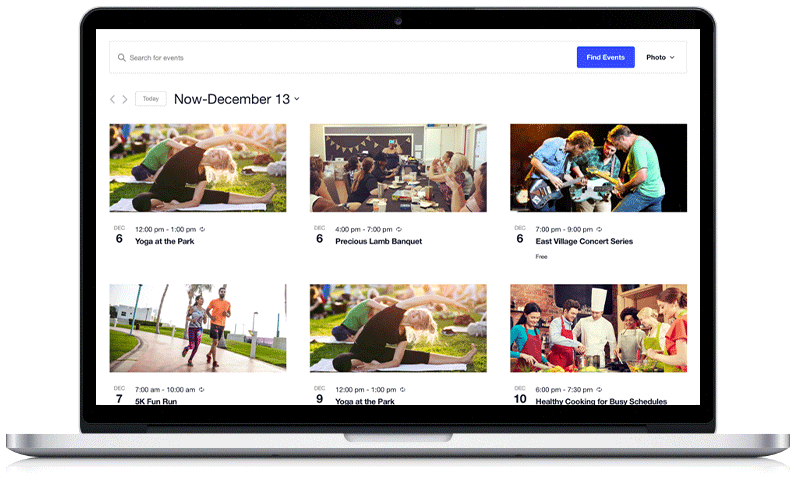5 Challenges to Expect With Your First Virtual Event (and Solutions)
The future is no doubt trending towards more virtual and hybrid experiences, and the brands who are adapting are also reaping the rewards such as the ability to reach new audiences. However, brands of all sizes face several challenges when getting started with their first virtual event...it's inevitable.
That's why we put together a list of the most common challenges and top solutions to overcome them.
1. Combatting zoom fatigue
2. Choosing the right technology
3. Registration numbers are less than you expected
4. Decision making has stalled
5. You don’t know where to start
|
New live stream tickets & widget Now promoters can sell tickets to any stream |
Challenge #1: Combatting the Zoom fatigue
Sitting in front of a computer for hours on end is the new normal, it’s also extremely draining.
Known as “Zoom fatigue", the mental and physical weariness caused by marathon video chats is caused by several factors ranging from multitasking while in meetings to distractions from family members at home.

Attendee engagement is a key goal of every event, but with various in-home distractions, multitasking, and fatigue working against you–how do you create an engaging and memorable virtual event?
Solution:
Put participant value first.
This goes without saying, but if your content isn’t interesting AND tailored to your audience, your attendees will tune it out. Switch up your presentation regularly by breaking it up with videos, polls, and expert insights, and use breakout rooms to give participants a chance to network with their peers.
If you’re looking for inspiration on types of engaging virtual events to run, check out these 180 virtual event ideas, here.
- Make videos interesting and engaging
- Use chat features for more engagement
- Include interactive tools (polls, surveys, videos)
- Use breakout rooms for small groups
Challenge #2: Choosing the right technology
The range of platforms available today is overwhelming. Each platform comes with different ways for engagement, but they all have some limitations, so it’s important to find something that works for you.
Solution:
The first step to choosing the right technology is defining what your goals are. Are you trying to create awareness and buzz for your brand?
Then it’s best to host a free concert series on YouTube Live for top-of-funnel goals. Need bottom-of-funnel conversions? Try a private, and an invitation-only tasting experience on Zoom. Having a goal will guide you in selecting from the plethora of feature sets provided by all the different virtual event platform vendors out there.
There are so many available options that you can end up wasting time and money on features you don’t need. Make a checklist of things that you need to make your event successful, then compare, and choose.
Challenge #3: Registration numbers are less than you expected
Hopefully, you can already expect attendees from your past events. However, reaching new attendees can be difficult and takes time and a cadence of emails, blog posts, social sharing, etc.
Solution:
Give yourself enough promotion time.
Getting people to be aware and excited about your event should start at least 3-4 weeks before launch, or even earlier. According to the On24 Benchmarks Report 2020, the majority of registrants sign up at least eight days before the event, however, early registrants account for 28% of total registrations.
Equip your speakers and employees with emails and social posts, and encourage them to share and invite their network. This allows for a broader, and maybe even a global reach, and also helps share the message with folks beyond your existing database.
Challenge #4: Decision making has stalled
You have some overall agreement on the event, but you can’t seem to move on the details, or you’re waiting for someone else to make and execute decisions.
Solution:
Assign a point person and give them decision-making authority and accountability. Without an owner, you’ll lack a clear sense of roles and responsibilities. Nothing ensures success more than this one decision.
Challenge #5: You don’t know where to start
And lastly, where do you start?
By now you probably have a running list in your head of all the things that need to be done, but you don’t really know where to start.

Solution:
Set a date, even if it’s a tentative one. Setting a date allows you to work backwards to create a timeline in advance so you can make sure that every item is assigned. Create additional lead time and check-in regularly with your team to make sure milestones are met, and make adjustments as necessary.
With the above solutions, you can tackle the common challenges associated with your first virtual event. Good luck!
Author: Jesse Dang







